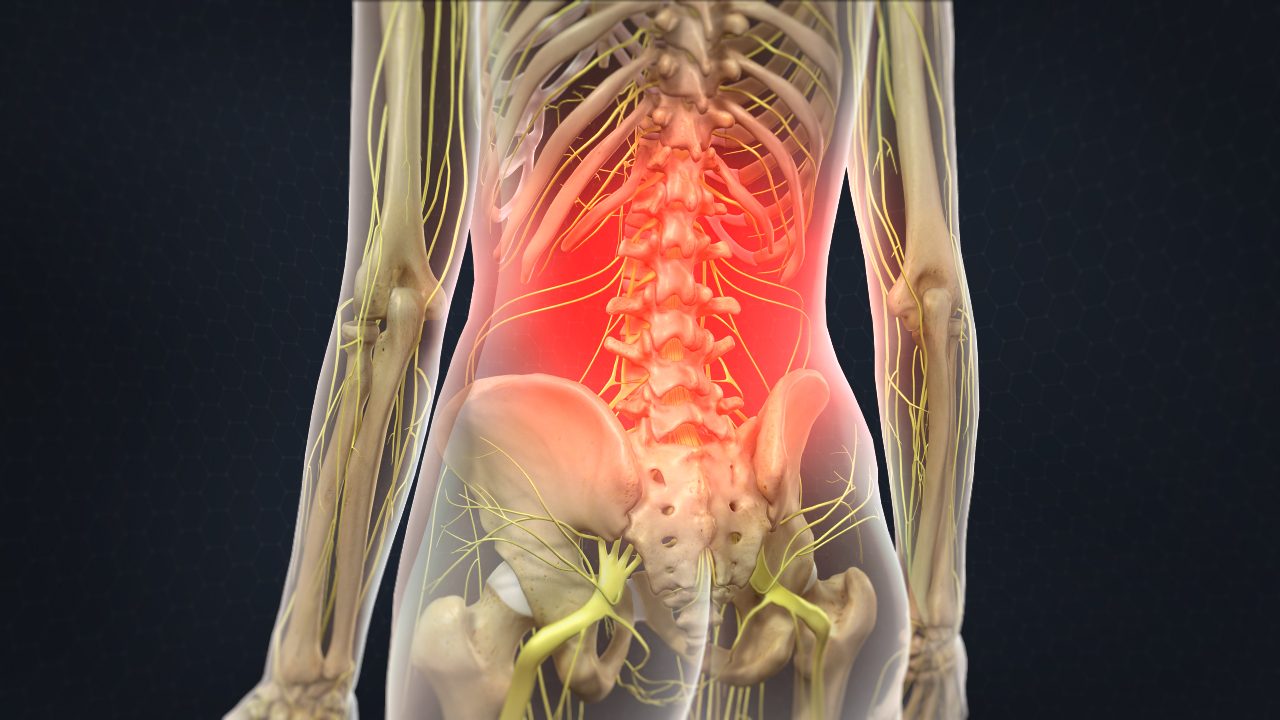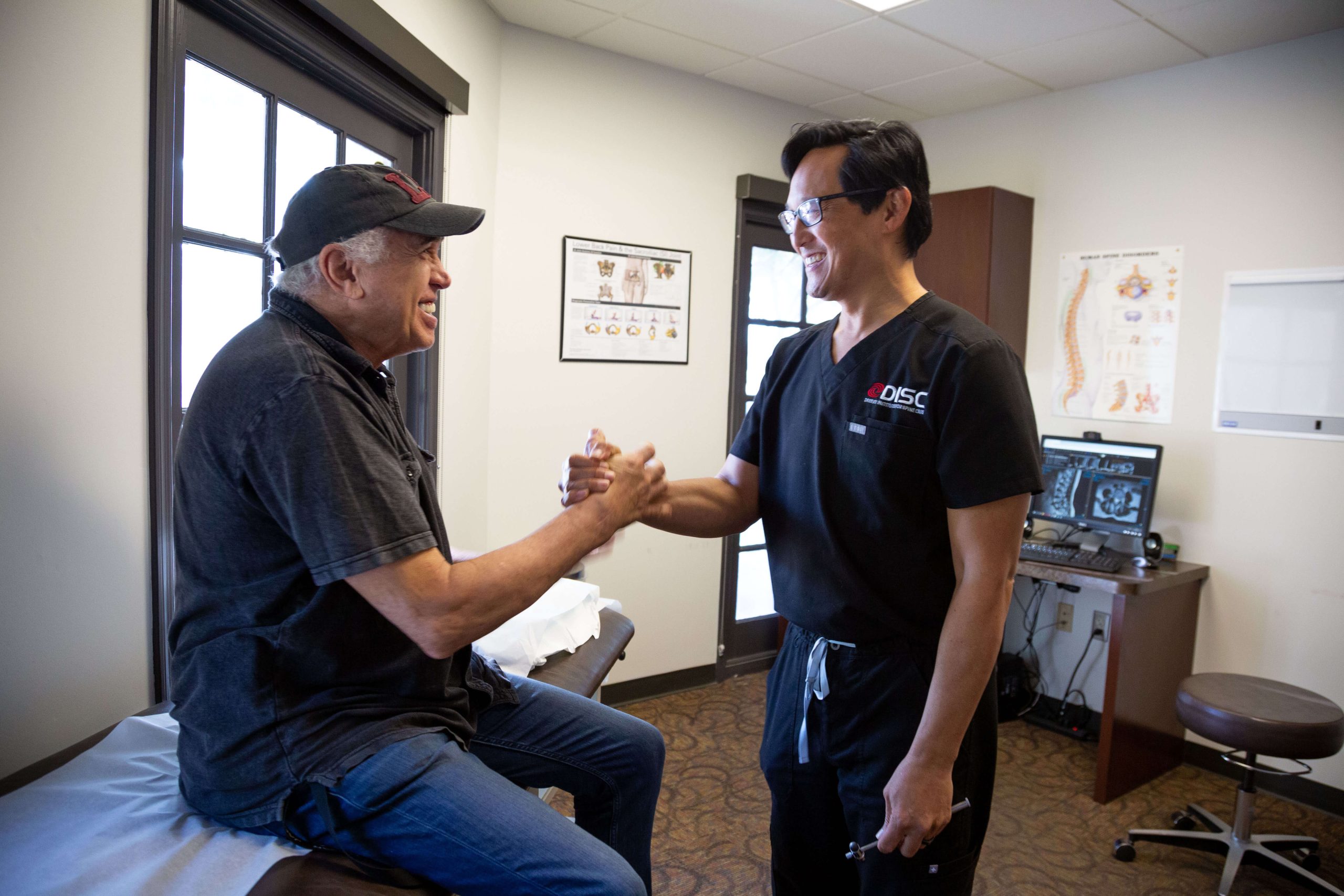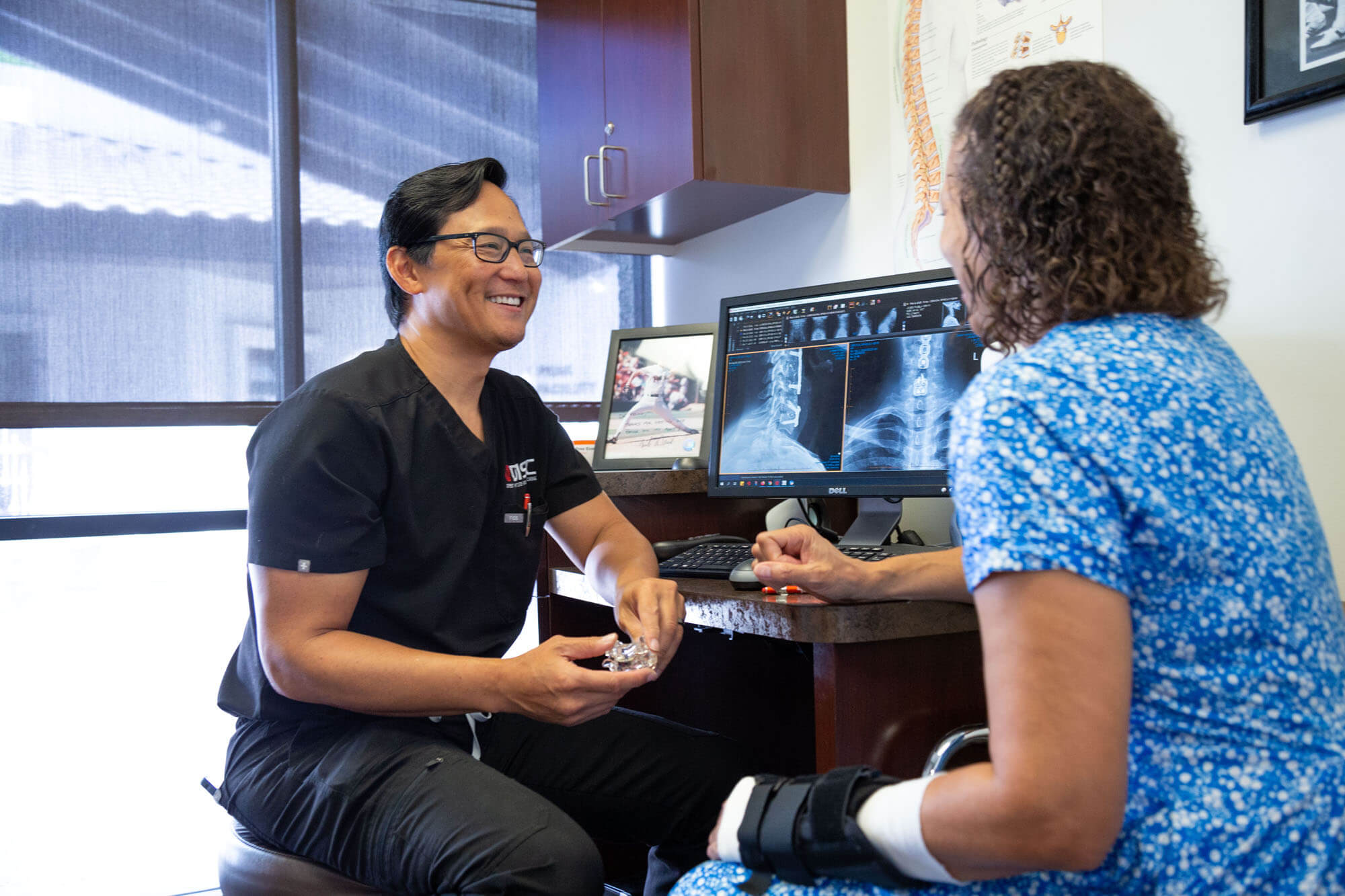Entering through the midline of the lower back, PLIF is a wide laminectomy, removing a degenerative disc and replacing it with a Polyetheretherketone (PEEK) cage and bone graft to provide spinal stability.
Lumbar spinal fusion is a surgical procedure performed to join together two or more vertebrae in the lower back (lumbar region) of the spine. The objective of this procedure is to stabilize the spine, reduce pain, and address conditions such as spinal instability, degenerative disc disease, spondylolisthesis, spinal fractures, or spinal tumors.
During a lumbar spinal fusion, the surgeon typically makes an incision in the lower back, exposes the affected vertebrae, and removes any damaged discs or bone spurs that may be causing compression or instability. The surgeon then places bone graft material between the vertebrae to promote fusion, or the growth of new bone that joins the vertebrae together.
Bone graft material can be obtained from various sources, including the patient’s own hip bone (autograft), a bone bank (allograft), or artificial bone substitutes. The surgeon then implants titanium screws, rods provide immediate stability while the fusion process occurs.
Over time, the bone graft material stimulates the growth of new bone cells, fusing the vertebrae together. This fusion eliminates motion between the fused vertebrae, which can alleviate pain caused by abnormal movement and stabilize the spine.
It’s important to note that lumbar spinal fusion is a significant surgical procedure and is typically considered after conservative treatments, such as medication, physical therapy, and injections, have failed to provide relief. The decision to undergo lumbar spinal fusion should be made in consultation with a qualified orthopedic surgeon or neurosurgeon who can evaluate the individual’s condition and recommend the most appropriate treatment option.
Studies have shown an 85% patient satisfaction rate following lumbar spine surgery. See how it can benefit you.
By fusing vertebrae, this surgery can correct a deformity, improve stability or reduce back pain. Specifically, lumbar fusion surgery can decrease painful symptoms of the following conditions:

Each version of lumbar spinal interbody fusion surgery undergoes a similar procedure — removing vertebrae and replacing them with a bone graft, screws and rods — but is accessed through different areas of the body.
Each specific surgeon has their comfort level and reasons to choose one particular surgical approach over another. Many times it depends on whether there was a previous surgery, or location, anatomical structure and condition of the afflicted spinal segment.
Entering through the midline of the lower back, PLIF is a wide laminectomy, removing a degenerative disc and replacing it with a Polyetheretherketone (PEEK) cage and bone graft to provide spinal stability.
This procedure is similar to PLIF but enters through the abdomen to insert a PEEK cage with a bone graft on the anterior portion of the spine. This can sometimes be performed and followed with posterior instrumentation (screws and rods), called a 360 fusion.
Avoiding the major back muscles this surgical approach enters from the side of your back through the foramen or natural opening where the exiting nerve is located. A unilateral facetectomy is performed allowing access to the front and back of the spinal disc.
Similar to a TLIF surgery, without performing a facetectomy. However, has limitations to access the front and back of the disc.
This procedure is also known as lateral access spine surgery, thus accessing the vertebrae through the patient’s side.
To prepare for a spine fusion surgery, the patient can do a few things to help support a successful fusion and recovery. We recommend:
Prepping the surgical site may involve trimming or shaving the hair around it and cleaning it with an antiseptic to ensure it’s free from excessive bacteria.
The patient will again discuss their medical history with a medical professional, along with any allergies, existing medical conditions or anything that could adversely affect the surgery. These procedures are taken to best ensure patient safety.

The whole surgery is done while the patient is under general anesthesia, so they are unconscious for the entire procedure. The technique used will depend on the location of the affected vertebrae — an anterior or posterior interbody fusion or a combination of the two. No matter the method chosen, the surgery will follow three steps — the incision, decompression and removal of disc, and instrumentation (screws and rods) and lumbar cage packed with bone graft.
An incision is made in the lower back, abdomen or on either side of the spine. The spinal canal is decompressed and disc nucleus is removed. To fuse the vertebrae, the surgeon will place the permanent PEEK cage with a bone graft between two vertebrae, and rods or screws will hold the spine together as the bone graft heals.
The patient may have a two- to three-day hospital stay following surgery. It’s normal to feel some pain and discomfort from the incision site, but this can be managed with pain medications.
Recovery from lumbar spinal fusion surgery can vary depending on the individual and the extent of the procedure. It often involves a period of restricted activity, physical therapy, and pain management. Full recovery may take several months, and the patient is typically advised to avoid heavy lifting and strenuous activities during the healing process. Complete spinal fusion surgery recovery can take several months. Continue reading to learn more about the recovery process through our frequently asked questions.
The patient may feel some stiffness or soreness in their back. Avoid twisting, bending and lifting anything during recovery to reduce the risk of further pain and encourage healing.
It is recommended to wait 24 to 48 hours following surgery before showering. When showering, carefully rinse the incision with soap and water and gently pat it dry.
The patient must wear their back brace following surgery until the first post-operative appointment. The doctor will then assess the recovery and determine whether the back brace is still needed.
The vertebrae may take several months to fuse fully. The back brace is needed to maintain structure and alignment for proper healing.
Recovery time may vary depending on an individual’s job. The patient may return to an administrative position after three to six weeks. However, a more strenuous job will take additional recovery time.
The patient will be walking soon after surgery while in the hospital. More intensive exercises like running or working out should wait for around six weeks if a physical therapist approves.
Physical therapy typically begins six weeks to three months after surgery and continues while at home. It will help strengthen the back, encourage healing and allow the patient to return to their favorite activities.
Contact your doctor if you are feeling signs of infection, such as:
Go to the emergency room if you have:

Following a complete recovery, the patient should be able to return to their usual activities. Let DISC help you gain your life back. Contact us today.
Our spine health blog features up-to-date spine education and expert spine tips from our spine specialists here at DISC.
1635 East Myrtle Avenue Suite 100, Phoenix, AZ 85020, USA
18700 North 64th Drive Suite 105, Glendale, AZ 85308, USA
8630 East Vía de Ventura Suite 210, Scottsdale, AZ 85258, USA
3487 South Mercy Road, Gilbert, AZ 85297, USA
1635 East Myrtle Avenue Suite 400, Phoenix, AZ 85020, USA